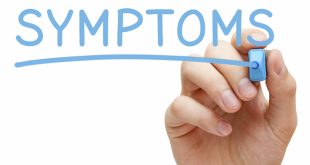If you take insulin to manage your diabetes, you could be at risk of diabetic ketoacidosis (DKA). DKA usually occurs in people with type 1 diabetes, but it has been known to happen in people with type 2 diabetes who take multiple injections per day of insulin and who have a pancreas that has essentially stopped working due to pancreatitis, cystic fibrosis or other conditions.
DKA is a condition that is caused by blood glucose levels that are high for a sustained period of time. If DKA is not recognized and treated, it can lead to a coma or even death. This can happen fairly quickly, sometimes within the space of 24 hours.
DKA results from a lack of sufficient insulin. Insulin is required to move glucose into the body’s cells. If there is not enough insulin to do this, the body will generate something called ketones, which are toxic, acidic chemicals that are produced when fat – instead of glucose – is burned for energy. Ketones can change the pH of the body, making it more acidic. Having a body that is too acidic can be fatal.
These are the warning signs of DKA:
• Extreme thirst and/or a dry mouth
• Feeling tired
• High blood sugar levels
• Difficulty breathing, or shortness of breath
• A “fruity” smell to your breath
• Abdominal pain
• Nausea and vomiting
• Loss of consciousness and coma
The best way to tell if you have DKA is to measure your blood sugar levels; in DKA, blood glucose levels are usually higher than 15 mmol/L. You can also check for the presence of ketones by using a blood ketone meter (for example, the FreeStyle Precision Neo™ Blood Glucose and Ketone Monitoring System) or urine ketone strips; however, urine testing may not be as accurate as checking blood ketone levels.
DKA is triggered by a lack of adequate insulin, which can happen for a number of reasons:
• Insulin has been omitted, forgotten or is not potent enough (for example, if it has been left in the heat). People on insulin pumps may be at higher risk of DKA, because if their pump fails, there is not a reserve of insulin in the body, as there is with basal insulins such as NPH, Lantus or Levemir. Therefore, people on pumps need to quickly troubleshoot problems if their blood sugars rise.
• If insulin requirements are increased, for example, if you are ill. An illness that causes vomiting is even more likely to cause DKA, as vomiting leads to dehydration, which in turn raises blood sugar levels.
• An acute event, such as a heart attack.
• Alcohol or drug use, such as cocaine.
If you are ill, never stop taking your insulin!
The best way to prevent DKA is by taking your insulin as prescribed, and to have a plan for sick day management from your healthcare team or diabetes education centre. If you are vomiting or you can’t get rid of ketones, it is important to go to the hospital immediately; there, intravenous fluids and insulin can be given. Changes in the level of potassium – a salt in the blood – and swelling of the brain (especially in children) can be fatal complications. These need to be treated in a hospital.
If you are in early DKA – that is, you have a small or moderate amount of ketones and your blood sugar level is higher than normal – but you are able to take fluids and give rapid-acting insulin and are not vomiting, then you can self-manage at home. It is important that you check your blood sugar levels every two hours and administer rapid insulin in doses according to how sensitive you are to insulin, until your blood glucose levels are lowered and the ketones disappear.
Another occasion that DKA can occur is at the time of diagnosis of type 1 diabetes, especially in children and adolescents. Recognizing the early symptoms of diabetes – and DKA – can be lifesaving. For more information about DKA in children and teenagers, click here.
Finally, a special note for people with type 1 diabetes who may have recently been prescribed a new class of drug called sodium glucose co-transporter (SGLT-2) inhibitors, such as Invokana (canagliflozin) or Forxiga (dapagliflozin). These medications can be added to insulin therapy to help lower blood sugar levels. Although not approved for use in people with type 1 diabetes, SGLT-2 inhibitors have been prescribed. In rare cases, if a person with type 1 diabetes goes into DKA while taking these drugs, their blood sugars do not always exhibit the usual rise that’s associated with DKA. This is called normal glycemic or euglycemic DKA, and thus the diagnosis and treatment of DKA may be delayed.
It is important to be aware of the risks of DKA, and knowing the signs and symptoms is crucial. If recognized early, DKA may be treated at home. However, if your blood glucose levels remain high, you can’t get rid of ketones or you are vomiting, it is important to go to the hospital and seek medical attention immediately.
Talk to your healthcare team and have a sick day management plan!
 Diabetes Care Community Learn, connect and care
Diabetes Care Community Learn, connect and care





2 comments
Pingback: The top 10 differences between type 1 and type 2 diabetes - Diabetes Care Community
Pingback: Managing diabetes when you are sick - Diabetes Care Community